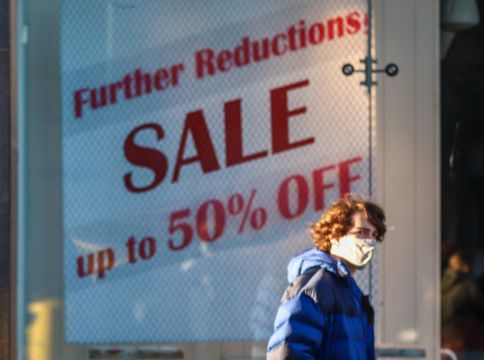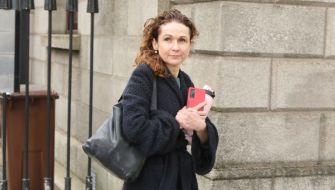Retail and supermarket staff were hardest hit by Covid-19 in the last two coronavirus waves to hit Ireland, new figures show.
Data from the Central Statistics Office shows retail assistants, cashiers and checkout operators were the workers most likely to contract the virus in the second and third waves of the pandemic.
The second wave of the virus lasted from August to November 2020 while the third wave is classified as lasting from late November 2020 to May 2021.
This was a significant shift from the early stages of the pandemic, when healthcare staff and social workers were most likely to catch the virus — making up 60 per cent of cases among workers in April 2020.
The new figures show that in the first wave of Covid-19, as the country locked down, 6 per cent of the total cases in workers were in nurses and midwives.
That level, the data indicates, fell to 4 per cent in the next two waves of the virus.
Retail staff and checkout operators made up 6 per cent of cases among all employees in the same time period.
The data shows how the places, as well as the people, where Covid-19 struck hardest shifted over the course of the pandemic.
“Analysing the cases over the first three waves of the pandemic, we can see that the profile of cases changed from the first wave, where cases were concentrated more in older age groups and in Dublin, to the second and third waves, where younger age groups were more likely to be infected and the cases were spread around the rest of the country,” CSO statistician Steven Conroy said.
In the first wave, Dublin became the epicentre of the pandemic in Ireland, accounting for over 50 per cent of cases.
This figure dropped to 31 per cent and 35 per cent in the next two waves as Covid-19 outbreaks spread beyond the capital.
Women remain more likely than men to contract Covid, but the first wave saw the starkest difference when 54 per cent of cases were female.
The data also shows that in the first wave, 19 per cent of cases were in overcrowded homes — defined by the CSO as where there is more than one person per room.
This had dropped to 8 per cent by the time the third wave struck.
While the data shows that rates of Covid-19 were similar regardless of how rich or deprived an area was by the time the third wave struck, in Dublin the poorest areas of the capital have consistently reported the highest rates of the virus.







